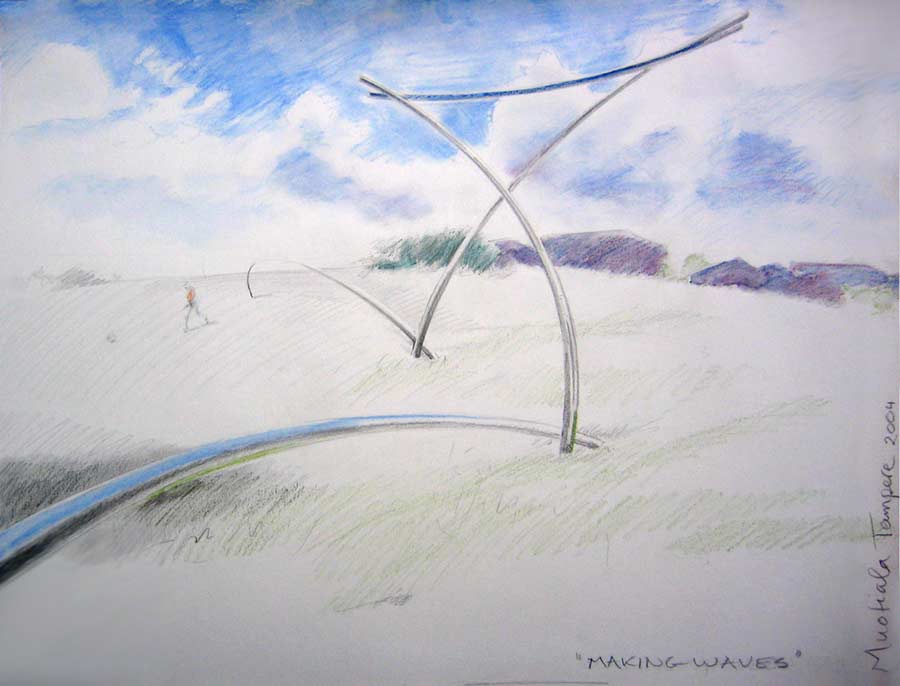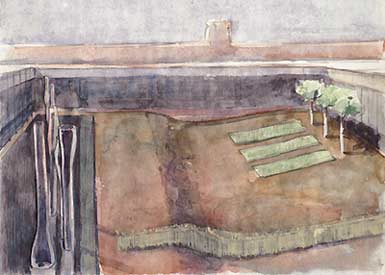cv | works | sculptures | site specific | environmental | land art | architectural | publications | exhibitions | symposia/lectures | cities | encounters | accounts
ENVIRONMENTAL ART in Holland and Finland


"Environmental art incorporates the materials which make up our environment as well as man-made objects. In this way it assimilates its environment while remaining distinct. The 'art' of making environmental art is being able to 'sculpt' the environment itself, without creating an entity which could be relocated to any other environment; Gutzon Borglum's Mount Rushmore sculpture being environmental sculpture is probably a matter of debate. But any sculpture 'en plein air' is not by definition environmental art."
Read more on my views on environmental art.
ENVIRONMENTAL ART IN HOLLAND AND FINLANDThe Dutch term 'omgevingskunst", a direct translation of 'environmental art' does justice to how the term should be understood. This also counts for the Finnish term 'ympäristö taide', which on the other hand has gotten a completely different meaning. 'Ympäristö' is the Finnish word for 'environment' and 'taide' is 'art'. But, whenever sculpture is permanently installed in nature - very often next to new stretches of highway - it is referred to as 'ympäristö taide'. Some of the works actually are conceived as environmental artwork. During the sixties the Dutch sculptor, Hans Petri made environmental projects in which he did include sculptural shapes by his hand; but the totality was the sculpture - the environmental sculpture. He used trees, natural stones, asphalt and grasses. Some other artists were designing environments at that time; but the attention became focused on the so called Arnhemse School, which was a group of verbally well educated artists who graduated from the Arnhem Art School. They had been prepared and professionally equipped for dialogue with politicians and civil engineers. In their virtuosity of terminology they left other artists far behind. Their work was so integrated with the built environment, that it was not easy to see where it ended or began. The Arnhem School used the same concrete tiles, bricks and other elements from of which the urban environment had been constructed for decades. The work of landscape designers was actually much more interesting. In Finland, on the other hand, ympäristötaide (ympäristö taide = environmental art) is more and more interpreted as taide (art) in the ympäristö (environment). I participated in a competition for ympäristö taide in Muotiala, a suburb to be built in Tampere, one of the larger cities in Finland. Having learned that the town was actually looking for art in the environment, I complied and made a proposal for large sculptural elements which made use of the slope of the terrain. Muotiala sculptural elements gratefully make use of the space offered by the environment, but I do not call this an environmental sculpture."
environmental art
"In 1969 I received my first commission which
enabled me to do more than place a sculpture on a given location.

During that period I was not in a situation where there was any original
natural landscape in which I could have felt a need to recreate it. In the
middle of the sixties I had moved back to Holland, which is a totally man
made environment a lived environment - the last existent Dutch wilderness
had been cultivated in the middle of the nineteenth century. So any natural
environment was created in a partnership between man and natural forces.
It is either a joining of forces or an opposing of forces, as is the case
in the battle against water.
In 1968 my first commission had been
to make a bronze sculpture for the interior of a public utility building.
A year later I was asked to do a sculpture for an interior garden at a vocational
rehabilitation and employment plant (DSW in Dordrecht, Holland). The Architect,
Dirk Hol, had projected an 'L' -shaped pond among other things.
He suggested I make a sculpture in the corner of the 'L'. I asked
whether I could make proposals for other elements in the garden. He said
that I could actually do the whole garden. This was the opening which gave
me the possibility to do much more than only adapt the direct surrounding
of my sculpture to it. The year before, I had already dispensed with the
idea of bases for my sculptures.
So this gave me an opportunity to
make a total environment, using more than only sculptural elements. During
my meeting with
Henry Moore in 1970 in Forte Dei Marmi, Italy I showed him pictures
of the DSW environmental project and asked for his ideas on environmental
art as I was developing it. He very much appreciated the fact that the water
columns were going to be made by me; he felt the need to include sculptural
elements which have been made by the sculptor. They at least should be designed
by him. He told me that he had some problems with some of the environmental
art projects by Isamu Noguchi. Though I maybe did not realize it at the
time, I do believe it is possible to make environmental art using elements
and resources from our environment, be it natural or man-made artifacts"
- environmental sculpture
- environmental art in Holland and Finland
- environmental art by Lucien den Arend
-
the evolution of the term environmental art
supplier of environmentally friendly energy
search this site
3D anaglyph photographs of my sculpture
works©author: Lucien den Arend
© 1998/present denarend.com
Google
this site was developed by
DutchDeltaDesign
Penttilä
Seppäläntie 860 51200 Kangasniemi Finland
telephone +358 (0)44 264 12 12
